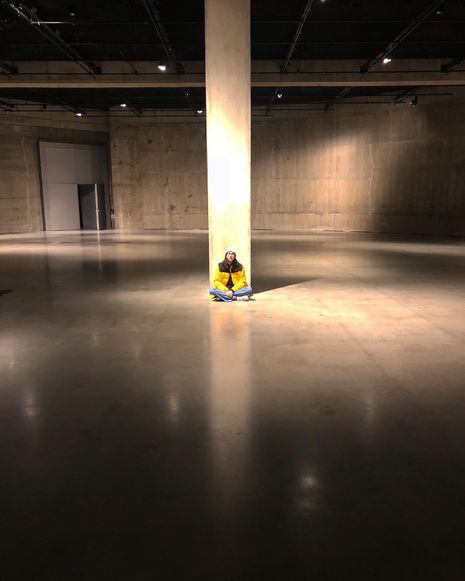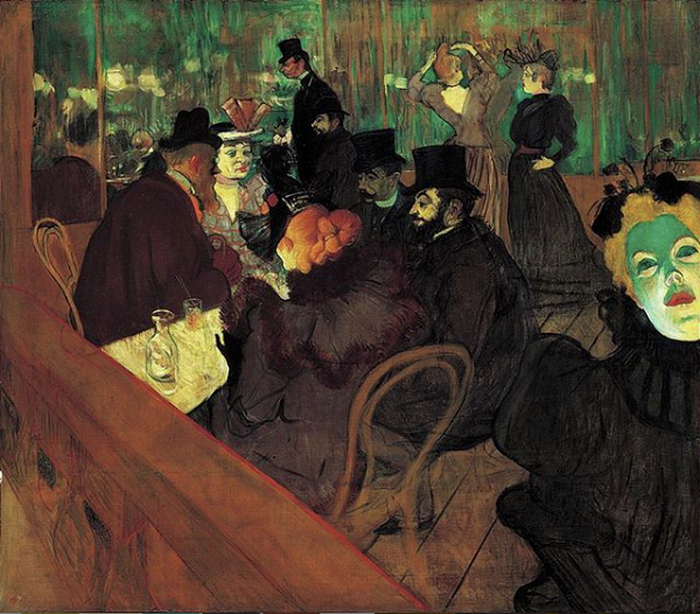The Empty Rooms of the Tate
Isabel Sebode reflects on a day away from Cambridge that made the world feel full

Last term there were several moments where I had the need to escape the overwhelming ‘smallness’ of Cambridge. London became my destination of choice and paradoxically the crowded uni accommodation of my boyfriend made me feel momentarily liberated from work and responsibilities. On one of those we took a long walk from Fitzrovia to the Tate Modern, where, instead of looking at art, we found our place in the rooms of the underground galleries. These were currently empty and ready to be filled with a new exhibition.
"The moments that I spent sitting in this place I felt like I became an artist myself"
In the dim light I sat down and closed my eyes to hear the echoes of people entering and quickly exiting again as they acknowledged the lack of art. The voices of adults, teenagers, parents and children resounded around the room, whilst the walls still seemed to hold remnants of the art that used to fill it. The moments that I spent sitting in this place I felt like I became an artist myself, filling the space with my own echoes of conversation. Yet, the second I stopped talking the work of words that I has created vanished and the room was once again empty with the sounds of joyful childish screams.
What particularly struck me as I sat on the stone floor is the transitory nature of the art, how quickly and easily the rooms can become empty. Much of the modern art we view constantly moves around, from one gallery to the next. Yet, this does not deny it its social, historical or artistic worth. The ever-changing walls of the Tate may make the individual pieces seem futile in their replaceability, yet I believe their value to exist in the moment we perceive them. This is seemingly epitomised in performance art, which is exists in the moment of creation and no more than that. Beyond this it metamorphoses into a recording or a written account, yet never the real thing. Our perception of the artwork is the art.
Take for instance Marina Abramovic’s Rhythm 0. This is recognised as her most drastic performance, as she translated her body into the physical work of art, which is created and shaped throughout the performance. 72 objects were presented to the audience to be freely used on her body. The audience was given the role of the artist, with the result that from feather and bread to razor and gun, everything was somehow used destructively. The final physical artwork is the body that will heal after the performance has ended – both performance and the resulting work are impermanent and will disappear with time. Yet, the value of the work lies in Abramovic and the audience that has become part of the performance. Although the work is fleeting, the memory of it echoes in the mind of both parties more profoundly than the experience of viewing The Guernica in real life might.
One may argue that performance art is futile, which we can debate, reject or embrace. In his exhibition “禮Li, Gifts and Rituals” in the Gropius Bau (Berlin), Lee Mingwei plays with the transience of art, even that of material creation. One part of the exhibition is composed of a station for people to write a letter in that will never be sent. At the end of the exhibition, all the letters are burned as part of the exhibition. Where is the value in this? The flame will extinguish, the letters deteriorate into ashes and the ashes will be decomposed. Yet, the significance does not lie in the material existence of the letters or even the exhibition itself, but in the experience of consciously and emotionally involving oneself with art, whether directly through writing or only as a viewer.
"The objective existence of art is not its source of value, but our interaction with it"
We burn letters, engage in performative rituals, produce modern art for this to fall into obscurity or travel from one gallery into the next. Yet, sitting in the empty rooms of the Tate I understood that it is not about remembering the details of every piece that once inhabited this bare space. I may not recall all paintings that I viewed the last time I visited the National Gallery, but I remember feeling emotional distress as I appreciated a tempest on the sea, or an urge to travel as I observed Venetian port scenes.
The objective existence of art is not its source of value, but our interaction with it. At least for me, art gains its value in the moment I engage with it, so that when this terminates the echoes of the artwork live in my mind and memory. Whilst my recollection of the intricate brushstrokes will blur out, I will reminisce the feelings that the colours evoked in me. Equally, I remember the feelings evoked whilst writing a letter, even if I forget its content and the paper is eventually burnt. The empty walls of the empty rooms of the Tate echo with the emotions of past art, rather than being impressed with the pieces that once inhabited them. Performance art illustrates how the social value of art arises through being observed and remembered emotionally, rather than through material existence or recognition as a magnum opus. Thus, I sat in the empty room and felt the art in its profound absence.
 Interviews / You don’t need to peak at Cambridge, says Robin Harding31 December 2025
Interviews / You don’t need to peak at Cambridge, says Robin Harding31 December 2025 News / Unions protest handling of redundancies at Epidemiology Unit30 December 2025
News / Unions protest handling of redundancies at Epidemiology Unit30 December 2025 Comment / What happened to men at Cambridge?31 December 2025
Comment / What happened to men at Cambridge?31 December 2025 Features / ‘Treated like we’re incompetent’: ents officers on college micromanagement30 December 2025
Features / ‘Treated like we’re incompetent’: ents officers on college micromanagement30 December 2025 Theatre / We should be filming ADC productions31 December 2025
Theatre / We should be filming ADC productions31 December 2025









